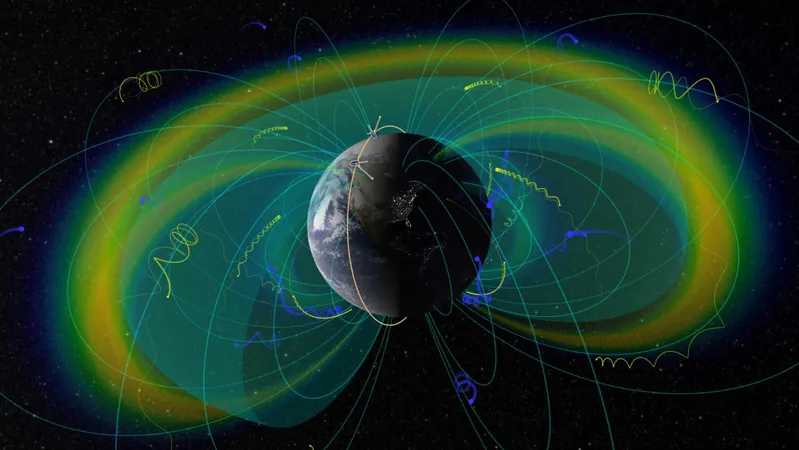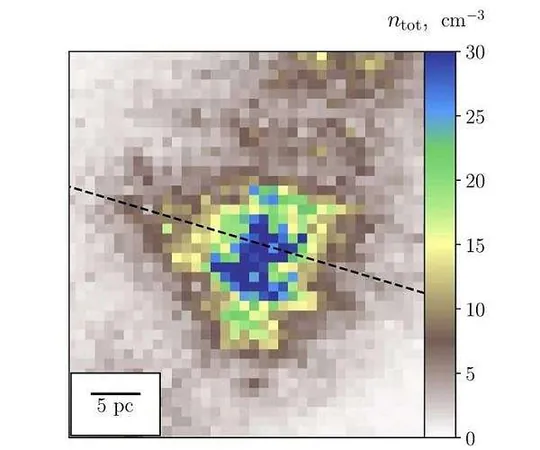
Unveiling the Shocking Link Between Lightning and Space Weather: Killer Electrons on the Loose!
2024-10-12
Author: Jia
Groundbreaking Research Unearthed
Recent groundbreaking research from the University of Colorado Boulder has unearthed a surprising connection between Earth's weather phenomena, like thunderstorms, and the unpredictable behavior of space weather. Led by undergraduate student Max Feinland, the study reveals that lightning strikes may knock loose high-energy electrons—dubbed "killer electrons"—from the inner radiation belt that surrounds our planet.
Significant Implications
This research holds significant implications for satellites and astronauts venturing into space. As Feinland aptly notes, “These particles are the scary ones," and their penetration capability can pose serious risks, damaging electronic devices or even leading to health issues for astronauts exposed to these harmful particles.
Study Published in Nature Communications
Published on October 8 in **Nature Communications**, the team's findings center around the radiation belts created by Earth's magnetic field. Lauren Blum, a co-author and assistant professor at CU Boulder, elaborated that while the outer radiation belt is well-known for its high-energy electron activity, the team's research marks the first time scientists have confirmed a link between lightning storms on Earth and the dislodging of electrons from the inner belt.
Lightning-Induced Electron Precipitation
The study demonstrates that when lightning strikes, it sends powerful radio waves shooting into space, which can disrupt electrons within the radiation belts, causing them to spill out into Earth's atmosphere—a phenomenon referred to as "lightning-induced electron precipitation." Fascinatingly, the data indicates that spikes of high-energy electrons in the inner belt often coincide closely with lightning strikes recorded in North America.
Feinland's Serendipitous Discovery
Feinland's serendipitous discovery occurred while analyzing data from the now-retired NASA SAMPEX satellite, where he identified clusters of high-energy electrons existing in a region where it was previously thought they were absent. This raises essential questions about our understanding of Earth's inner radiation belt and the interactions between terrestrial weather and space phenomena.
Dynamic Relationship with Solar Activity
As electrons are jostled back and forth like a game of pinball between the Earth’s hemispheres, each bounce contributes to the potential fall-out of these high-energy particles into our atmosphere. Blum speculated that these events might be more frequent during periods of heightened solar activity when more high-energy electrons are present, further complicating the already dynamic relationship between Earth's weather patterns and outer space.
Future Research Aims
The researchers aim to delve deeper into this captivating interaction, seeking to predict when such dangerous emissions are likely to occur and to devise protective measures for satellites and people working in space.
Embracing the Enthusiasm for Research
For budding scientists like Feinland, this research couldn't be more enthralling. “I didn’t even realize how much I liked research until I got to do this project," he expressed enthusiastically. This fascinating study highlights not only the intricate connections between weather on Earth and cosmic activity but also opens the door to new possibilities in protecting technological and human assets from the threats posed by killer electrons.
Conclusion
Stay tuned as we continue to unravel the wonders of our universe!

 Brasil (PT)
Brasil (PT)
 Canada (EN)
Canada (EN)
 Chile (ES)
Chile (ES)
 España (ES)
España (ES)
 France (FR)
France (FR)
 Hong Kong (EN)
Hong Kong (EN)
 Italia (IT)
Italia (IT)
 日本 (JA)
日本 (JA)
 Magyarország (HU)
Magyarország (HU)
 Norge (NO)
Norge (NO)
 Polska (PL)
Polska (PL)
 Schweiz (DE)
Schweiz (DE)
 Singapore (EN)
Singapore (EN)
 Sverige (SV)
Sverige (SV)
 Suomi (FI)
Suomi (FI)
 Türkiye (TR)
Türkiye (TR)